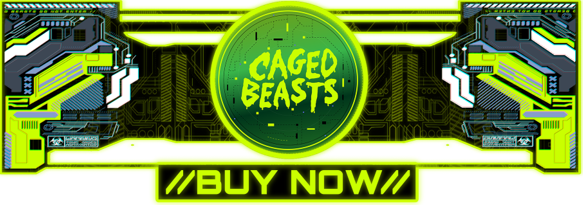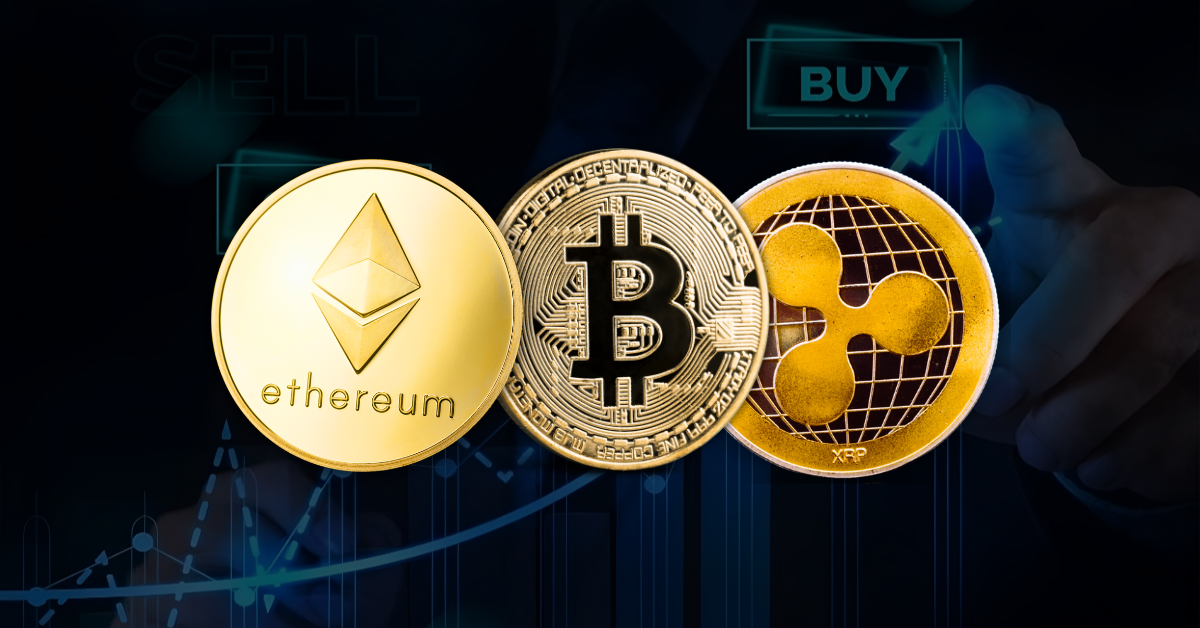Binance And Ethereum Are At War In The Hottest Technological Arms Race Of 2022: Use Case Of Quilvius
Binance And Ethereum Are At War In The Hottest Technological Arms Race Of 2022: Use Case Of QuilviusATZCrypto - Latest Bitcoin, Ethereum, Crypto News & Price Analysis Explaining the battle between ETH vs BSC requires putting some context into...

Explaining the battle between ETH vs BSC requires putting some context into perspective, as the outcome of this confrontation is far from being straightforward. If you have not been living under a rock in the past decade, most likely, you are aware that the crypto industry started with a single asset — Bitcoin (BTC). Since 2009, when Satoshi published Bitcoin’s White Paper, people worldwide began building assets, blockchains and applications, trying to extend the frontier of crypto technology. Blockchain essentially represents the distributed ledger technology on which crypto assets and solutions run. Builders and developers utilize it as the backend for decentralized applications (DApps) and digital assets.
DApps serve as programs whose frontend resembles conventional applications with a user-friendly interface, but their backend runs on blockchains or any other distributed ledger (DLT). In addition, depending on the asset’s quality, coins or tokens built on blockchains can facilitate transactions and value storage, which will be free of third-party involvement. This is why many blockchains enable creators to work with and build on top of them, with Binance Smart Chain (BSC) and the Ethereum (ETH) blockchains being among the most prominent options available.
The community has been ranting for some time now about whether BSC is better than Ethereum, debating which blockchain is safer and provides better scalability. Although, at first glance, BSC and Ethereum might feel almost identical as Dapps and tokens built on BSC are compatible with Ethereum Virtual Machine (EVM). Moreover, suppose you are using the MetaMask extension. In that case, you might have noticed that both blockchains’ public wallet addresses are the same, not to mention that there are even cross-chain projects that operate on both networks, like Polkadot and Cosmos.
Nevertheless, there are some conspicuous distinctions between the two chains that we will consider in today’s editorial. We will discuss the pros and cons of why projects choose to build on each blockchain, why Ethereum is still dominating the market of Dapps, and what the future holds for these two blockchain wonders. To exemplify my point, I will refer to the Quilvius (QVIU) project and let the audience decide who wins the technological wars once and for all. Let’s dive in.
Similarities Between BSC and Ethereum: DeFi
When it comes to DeFi, many DApps cross over between BSC and Ethereum due to the blockchains’ inherent compatibility I have mentioned above. Developers can easily port applications from Ethereum to BSC, and since Ethereum code is open source, new BSC projects often reuse it. Let’s look at the top five DApps on Ethereum by users on DAppRadar. Here you can see a DeFi Automated Market Makers Uniswap, a MetaMask Extension, and a peer-to-peer marketplace (OpenSea).

Source: DAppRadar
Now, if you look at BSC’s top five, you’ll see a lot of similarities. PancakeSwap was created as a hard fork of Uniswap, and StableFund runs on Polygon, essentially made to facilitate the building of DApps on Ethereum. But since Ethereum’s open-source code can be copied, Polygon can also support the building on BSC.

Source: DAppRadar
However, it should be noted that when it comes to crypto gaming, Ethereum still reigns supreme, as the most popular titles are home to the Ethereum blockchain. Although there are projects on BSC similar to Axie Infinity, only Tiny World has neared to get as big an audience as the classic games on Ethereum.
Another similarity shared between the two networks is the transfer of assets. If you make a BEP-20 or ERC-20 deposit into a wallet account, you might notice that both wallet addresses are identical (this is why both can be connected to MetaMask). If you accidentally choose the wrong network when withdrawing your tokens from an exchange, you will have no problem retrieving them from the other blockchain. In other words, sending tokens from BSC to Ethereum and vice versa would not be lost, albeit always check the corresponding address because this is considered one of the easiest ways of losing money in crypto.
Lastly, both blockchains employ the gas fee model, which essentially measures a transaction’s complexity, for miners to prioritize transactions with higher gas prices. We will discuss it in more detail in the next section of the article, but for now, let’s delve into the differences between the two networks.
Binance Smart Chain (BSC) vs Ethereum Blockchain
Ethereum was created by Vitalik Buterin in 2013 and came to life as an independent blockchain in 2015. From day one, it grew substantially in the years following its launch and came to dominate the industry as the leading blockchain for building. The main reason for its success is that Ethereum includes smart contract capabilities, making the construction of DApps possible in the first place.
However, along the way, Ethereum scaling has surfaced as a massive issue, with ridiculously high gas fees encumbering network users during specific periods. The highest gas fee ever recorded was $196.638, according to Cointelegraph. As aforementioned, gas refers to fees paid for interactions with a blockchain, and while Ethereum proved to dominate the crypto space, with scalability issues, users began looking elsewhere.
In contrast, BNB Smart Chain was created in 2020 as a new blockchain that aims to help developers create high-performance DApps, formerly known as the Binance Smart Chain, but it was rebranded in early 2022 to separate itself from the Binance exchange. The BNB Smart Chain has the Ethereum Virtual Machine (EVM) and smart contract abilities. However, it does not produce network congestion and a reduction in throughput like Ethereum.
Another difference between the two blockchains lies in the centralization aspect. Ethereum blockchain has more validators running the chain than BNB Smart Chaim. To become a validator on BSC, a person must create hardware with the necessary specifications, run a full BSC node and stake 10,000 BNB. Meanwhile, Ethereum requires staking only 32 ETH, among other technical specifications. It should be noted, however, that the centralization aspect directly correlates with speed and costs as BSC has a relatively small number of participants, so while being more susceptible to a hostile takeover, the network offers faster and cheaper transactions.
Quilvius Case Study

To determine who wins the battle of blockchains, I will refer to the Quilvius project, which is essentially a non-profit publishing crypto company. The project’s goal is straightforward: to make culture and knowledge available to everyone worldwide by supporting the authors who want to publish their books but don’t yet have the opportunity to do so. To achieve this, the project plans to move authors and content producers into the Metaverse, where creators will be able to promote their works while users read these books.
According to Crypto Mode, there is a nice twist to it: readers could earn a certain amount of money for each book. The winnings will be collected with the project’s native token QVIU, while top-rated authors will profit from advertising revenue. The spread of possibilities for creators is impressive, as also translators could join the Metaverse and earn potential profit from receiving translation requests. According to Verified Market Research, the metaverse market is expected to reach $824.53 Billion by 2030, growing at a CAGR of 39.1% from 2022 to 2030. Considering this, it is predictable that more and more crypto projects want to jump onto the metaverse bandwagon.
The fact that the Quilvius project is Metaverse compatible is an exciting advantage for everyone, but how does it plan to sustain a smooth operation for its users? The answer is that it collaborates with Binance Smart Chain to ensure Quilvius’ progress into the future. According to the team behind the project, BSC was chosen instead of Ethereum because its model lacked the functional capability for smart contract execution, as the continuous network’s congestion would clog and slow it down considerably. Interestingly, gas fee prices were not mentioned as a potential drawback of choosing the Ethereum network.
So, Which Is Better?
Although it is clear that there are many similarities between Binance Smart Chain and Ethereum, the question still remains: Will BSC take over Ethereum as the dominant force in Defi, Metaverse, NFTs and GameFi? The answer is no one can say for sure, and from what we have discussed today, the explanation could be very subjective, depending on what developers and users seek from blockchain features and performance. For instance, the Quilvius project has chosen the BSC because, at the moment, the network offers cheaper transactions at a faster speed.
However, if the long-anticipated Ethereum ‘Merge’ goes as planned, the Ethereum blockchain will ultimately deliver much faster and cheaper network interaction. Moreover, we should not forget about centralization, as any network that is not entirely decentralized is highly susceptible to a hostile takeover. Maybe the number of validators for BSC will increase in the future, but for now, this is highly unlikely. And yet given the amount of interoperability between the two blockchains, one could speculate that the future looks to be multi-chain. I guess I will leave you with that.
Quilvius (QVIU)
- Presale: http://join.quilvius.com/
- Website: http://quilvius.com/
- Telegram: https://t.me/QuilviusOfficial
This is a paid press release. ATZCrypto does not endorse and is not responsible for or liable for any content, accuracy, quality, advertising, products, or other materials on this page. Readers should do their own research before taking any actions related to the company. ATZCrypto is not responsible, directly or indirectly, for any damage or loss caused or alleged to be caused by or in connection with the use of or reliance on any content, goods, or services mentioned in the press release.
SNEKbot by DexHunter on CARDANO
Cardano's Telegram Trading Bot live on Cardano mainnet!TRADE NOW!










